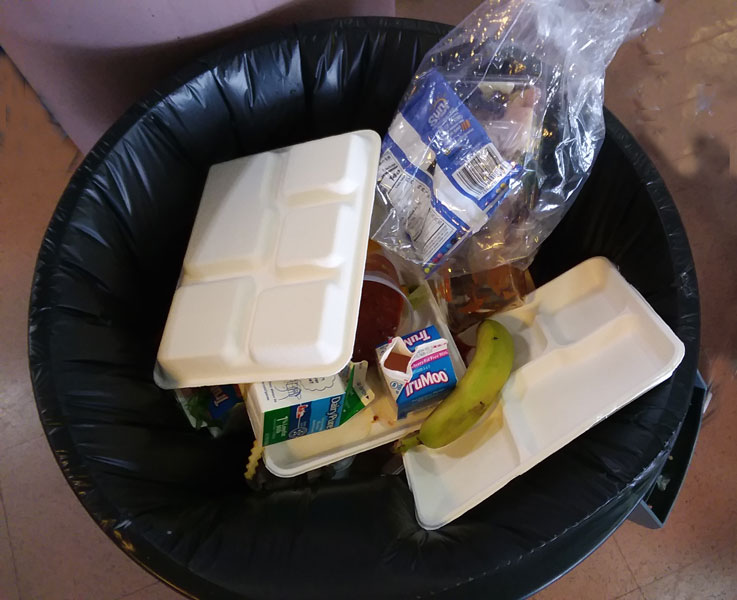Paper Trays: Nearly 5,000 a Month Sent To Landfill
March 28, 2019
There is only one reason cardboard trays are used in the Commons: They are disposable. This means the cafeteria staff don’t have to wash reusable plastic trays. But is the best decision?
According to this reporter’s observation, at least 249 cardboard trays are used daily in the Commons. This means that in a normal school week, 1,245 trays are dispensed. With 20 school days per month, an estimated 4,980 trays end up in landfills each month.
One cardboard tray weighs .5 oz., meaning 32 trays equal one pound of waste. This means that nearly 156 pounds of cardboard trays are sent to the landfill every month.
Although some cardboard trays can be recycled, most students just throw them out, not giving a second thought as to where the dozens of bags of trash end up. According to the Annenberg Foundation, paper and cardboard account for 41 percent of all municipal solid waste in the U.S.
Many cardboard trays can’t be recycled because of food residue. If cardboard trays get liquids or food residue on them, they have to be thrown out.
According to The Guardian Environment Network, making paper products takes far more energy than making plastic. The process of cutting down trees, transporting them and using heavy machinery to produce paper and cardboard releases greenhouse gases into the atmosphere.
Plastic is manufactured once and can be reused many times. Plus, plastic trays are far more sturdy, meaning that they won’t collapse if they get liquid on them, like the cardboard trays do.
On the other hand, plastic is more difficult to recycle. It does not quickly decompose like cardboard.
The solution is simple: Start using reusable plastic trays. Plastic trays would help reduce the amount of waste created by schools. Currently, cardboard trays are used because there is no efficient way for lunch staff to wash them. In the upcoming years, Santa Fe High does plan on adding a dishwashing station once the new cafeteria is built, according to Elizabeth Cull, director of Student Nutrition. An act as simple as switching to plastic trays will greatly benefit the environment.


